razahaza/iStock/GettyImages
Living in a mountainous region has a number of pleasures, from outdoor activities to the simple pleasure of enjoying a spectacular view from your window. Unfortunately, it complicates life in the kitchen, where the once-straightforward task of baking a batch of cupcakes can require a number of adjustments. The principles of high-altitude baking are well established, so you should be able to turn out good cupcakes from scratch or from a mix after only minimal amounts of trial and error.
Cupcakes From Scratch
Bake the cupcakes at a higher temperature. For chocolate cupcakes or especially delicate batters, increase the oven temperature by 15 degrees Fahrenheit. For more robust recipes, you can increase the baking temperature by up to 25 degrees.
Cut back on the sugar. Sugar weakens the crumb of your cupcakes, so take out 1 tablespoon for every 1 cup of sugar in your recipe.
Increase the liquids in your cupcake batter, to compensate for rapid evaporation in the thin air. If you're above 3,000 feet, you'll need to add an extra tablespoon or two. After that, add another 1 to 1 1/2 tablespoons per 1,000 feet. Use an egg white as 2 tablespoons of liquid whenever possible, because the extra protein will help your cupcakes hold their structure.
Add a small amount of flour to your recipe to help firm up the batter. Above 3,500 feet you'll probably need 1 extra tablespoon of flour, and 2 tablespoons if you're higher than 5,000 feet.
Use minimal leavening. At high altitudes, the air or gas bubbles in your cupcake batter will expand too much, forcing its way out of the batter and leaving your cupcakes deflated and coarse. Over 3,000 feet, reduce your baking powder or soda by 20 to 40 percent. Use half the ordinary amount at over 5,000 feet. For butter cakes, reduce your creaming time, and for sponge cakes, whip your egg whites minimally.
Cupcakes From Mix
Cut back on the amount of oil your mix calls for, starting at about 25 percent less. For example, if your mix calls for 1/2 cup of oil, use 3 ounces instead. Fat weakens the crumb of your cupcakes, making it harder for them to set firmly at high altitude.
Use buttermilk or soured milk for up to 1/4 cup of the liquid in your cupcakes. You can't reduce the amount of baking powder in the mix, but the buttermilk's acidity will partially neutralize its leavening power and help prevent your cupcakes from over-rising.
Add 2 to 3 tablespoons of flour to your mix. This will help firm the crumb of your cupcakes, giving them better structure.
Bake your cupcakes at a temperature 15 to 25 degrees higher than indicated on the box, to help set the batter more quickly and prevent fallen cupcakes.
Related Articles

Does High Altitude Make a Difference ...
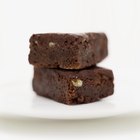
Altitude Tips for Baking Brownies

What Kind of Flour to Use for Cupcakes?

How to Adjust Baking Brownies for High ...

What Causes Cupcakes to Fall?

Can You Use Butter Instead of Cooking ...
Easy Strawberry Cake Recipe

Facts About How Baking Powder Might ...
Does Humidity Affect Baking Times?
What Causes My Cake to Fall When ...
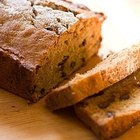
How to Bake a Cake Without Sugar

Bread Flour vs. Cake Flour in Sponge ...
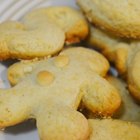
How to Make Butter Sugar Cookies
What Can I Use As a Sugar Substitute ...
The Chemistry of Baking Brownies

How to Cook Brownie Cupcakes Without ...

How to Add Meringue Powder to ...
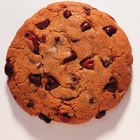
Is Butter or Shortening Better for Soft ...
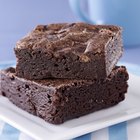
How to Replace Ingredients to Make ...

How to Substitute Applesauce for Oil in ...
References
Tips
- Try your favorite mix or recipe without alterations, the first time. Sometimes they'll bake fine at higher altitudes, without adjustments.
- Only fill your cupcake papers one-half full, rather than two-thirds full, because the batter will expand more than it does at sea level. This means you'll get a few extra cupcakes out of each batch.
- The combination of higher altitude and higher baking temperature means shorter baking times. If your recipe specifies 30 minutes, your cupcakes will probably only need 20 to 24 minutes.
- Cakes are more prone to sticking at high altitudes, and you might find that your cupcakes stick to their paper liners. If so, spray the liners lightly with pan spray before filling them.
Writer Bio
Fred Decker is a trained chef and prolific freelance writer. In previous careers, he sold insurance and mutual funds, and was a longtime retailer. He was educated at Memorial University of Newfoundland and the Northern Alberta Institute of Technology. His articles have appeared on numerous home and garden sites including GoneOutdoors, TheNest and eHow.